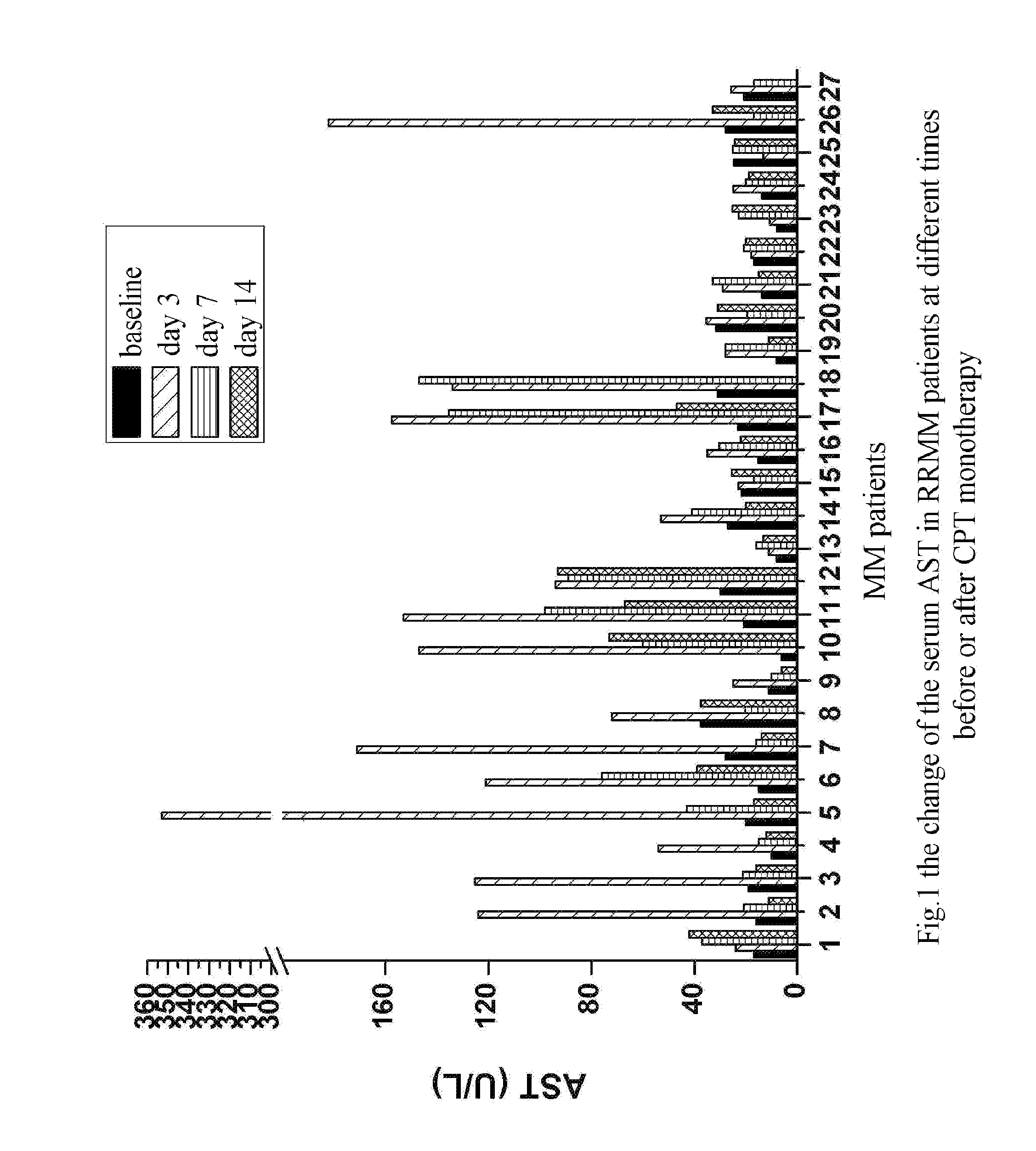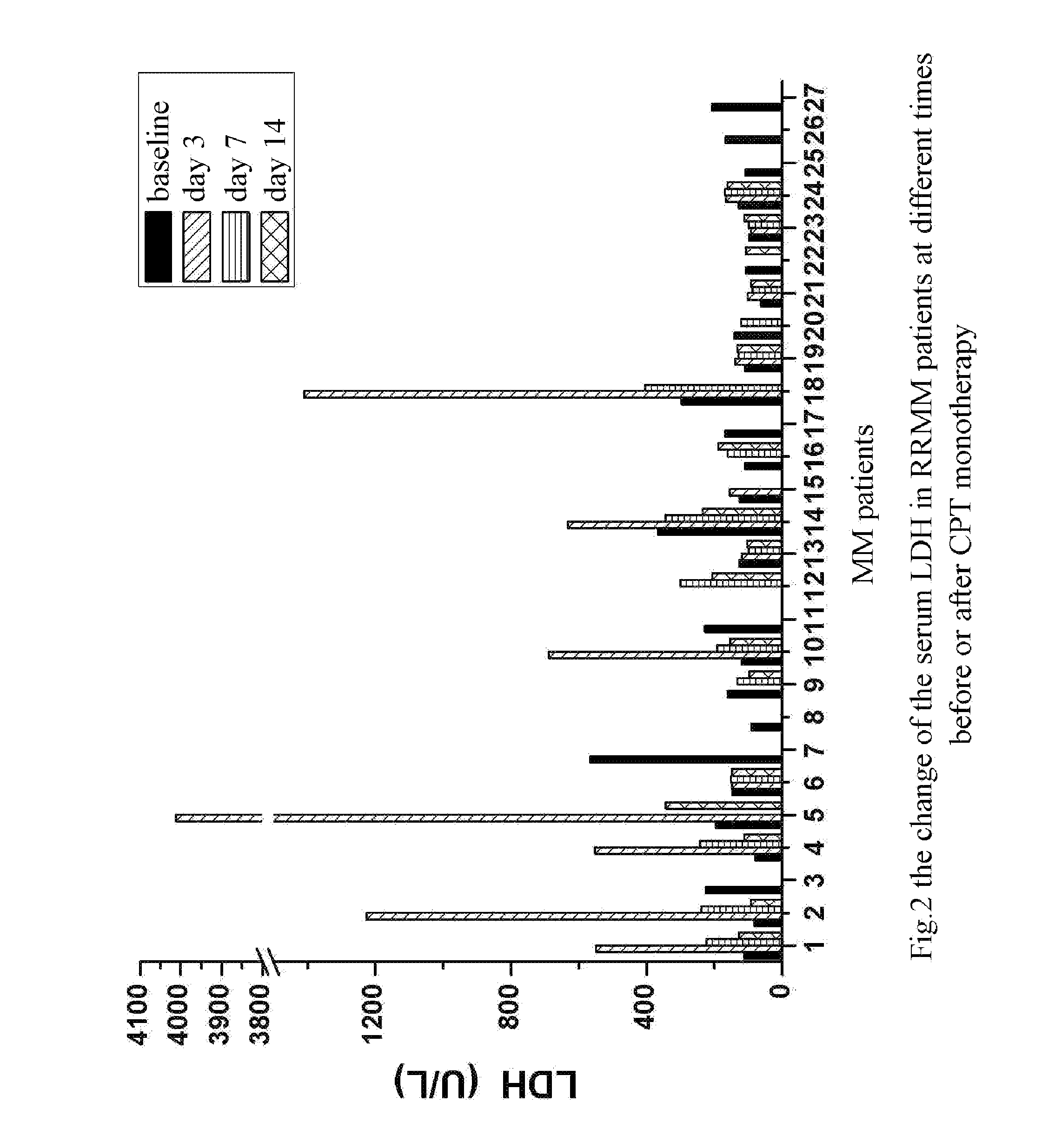Use Of Detection Of Aspartate Transaminase And Lactate Dehydrogenase In Early Evaluation Of Clinical Efficacy Of Antitumor Intervention Measure
- Summary
- Abstract
- Description
- Claims
- Application Information
AI Technical Summary
Benefits of technology
Problems solved by technology
Method used
Image
Examples
example 1
The Rise of Serum AST and LDH Could Predict the Efficacy of CPT in Treating Patients with Multiple Myeloma
[0036]1. Inclusion Criteria
[0037]1.1 meeting the diagnostic criteria for MM, failed to treatment of first-line standard chemotherapy scheme or relapse / progress after relief;
[0038]1.2 age≧18
[0039]1.3 physical condition grade≧60
[0040]14 expected lifetime≧3 months
[0041]1.5 no chemotherapy, radiotherapy, targeted and anti-angiogenic drugs, interferon treatment and other research drugs was taken within two weeks;
[0042]1.6 no obvious dysfunction of main organs. The following laboratory indexes must meet the following requirements:
[0043]Blood: white blood cell≧2.0×109 / L, neutrophilic granulocyte≧1.0×109 / L, platelet count≧30×109 / L, hemoglobin≧60 g / L.
[0044]Liver function: serum total bilirubin, ALT and AST≦1.25 times of the upper limit of normal value.
[0045]Hepatitis B: positive for only surface antibody, core antibody or e antibody; positive for all of surface antigen, core antibody, e ...
example 2
The Rise of Serum AST and LDH Could Predict the Efficacy of CPT in Combination with Thalidomide in the Treatment of MM Patients
[0121]1. Inclusion Criteria
[0122](1) meeting the diagnostic criteria for MM;
[0123](2) patient conditions: MM patients having a relapse after at least first-line chemotherapy protocol of two treatment cycles or MM patients having progress or being ineffective after the latest treatment (at least two treatment cycles) and at least the latest treatment protocol (within three months) for the patient comprised Thalidomide (abbreviated as Thal) or Thalidomide was used to retain the treatment (the usage amount of Thalidomide is no less than 100 mg / d);
[0124](3) age≧18;
[0125](4) physical condition grade≧60;
[0126](5) expected lifetime≧3 months;
[0127](6) neither chemotherapy nor radiotherapy was received within four weeks except Thalidomide, and washout period was over;
[0128](7) no obvious dysfunctions of main organs (it was judged according to the upper limit of grade...
PUM
 Login to View More
Login to View More Abstract
Description
Claims
Application Information
 Login to View More
Login to View More - R&D
- Intellectual Property
- Life Sciences
- Materials
- Tech Scout
- Unparalleled Data Quality
- Higher Quality Content
- 60% Fewer Hallucinations
Browse by: Latest US Patents, China's latest patents, Technical Efficacy Thesaurus, Application Domain, Technology Topic, Popular Technical Reports.
© 2025 PatSnap. All rights reserved.Legal|Privacy policy|Modern Slavery Act Transparency Statement|Sitemap|About US| Contact US: help@patsnap.com



